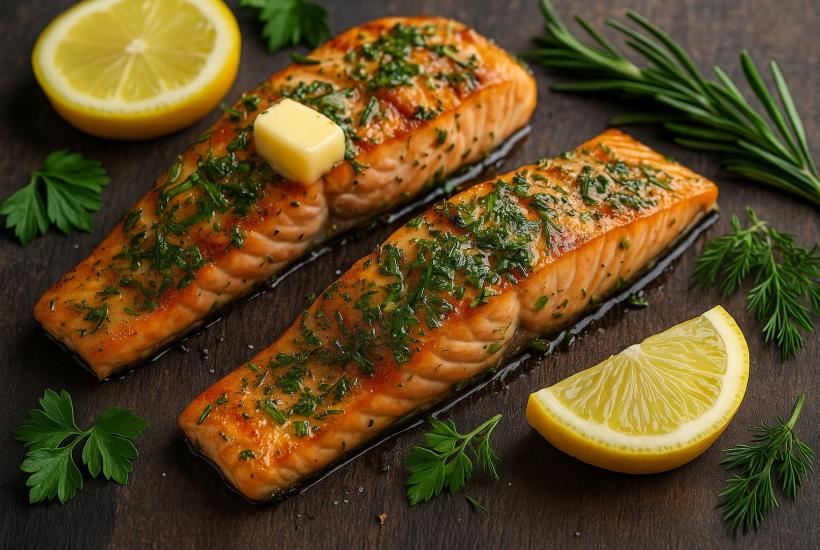When people think of omega-3 fatty acids, images of salmon or trout usually come to mind.
But let’s be honest: not everyone can enjoy these pricey fish on a regular basis.
The good news? There are plenty of wallet-friendly alternatives that pack just as much, if not more, of these essential fats — and many bring extra perks like fiber, minerals, and antioxidants.
Why Omega-3s Matter and the Types You Need
Omega-3s are polyunsaturated fats your body can’t produce on its own, so it’s crucial to get them from your diet.
Nutrition experts highlight three main forms to know:
-
ALA (alpha-linolenic acid): Found in chia seeds, flax, and walnuts, this type supports heart and brain health.
-
EPA (eicosapentaenoic acid): Common in oily fish like mackerel, sardines, and tuna, EPA helps reduce inflammation.
-
DHA (docosahexaenoic acid): Found in seafood and algae, DHA is vital for vision, memory, and overall brain function.
“These fats benefit the brain, liver, hormones, and cellular health, while also helping fight inflammation,” says dietitian Maddy Pascuariello.
Surprising Foods That Pack More Omega-3 Than Salmon
Salmon delivers roughly 1.8 grams of omega-3 per 100 grams. But several other foods can offer even higher levels at a fraction of the cost:
Mackerel
-
Omega-3: ~2.6 g per 100 g
-
Bonus nutrients: Protein, calcium, iron
Mackerel is versatile — bake it, stew it, or flake it into salads for an affordable omega-3 boost.
Chia Seeds
-
Omega-3: ~5 g per 28 g (1 oz)
-
Bonus nutrients: Fiber, calcium, plant protein
These tiny seeds are a true superfood. Sprinkle into yogurt, smoothies, or oatmeal to instantly ramp up omega-3 intake.
Ground Flaxseed
-
Omega-3: ~3.6 g per 30 g
-
Bonus nutrients: Protein, lignans
Grinding flax is key, since whole seeds pass through the digestive system intact. Mix into cereals, salads, or baked goods.
Hemp Seeds
-
Omega-3: ~2.6 g per 45 g
-
Bonus nutrients: Vitamins A, D, E
Hemp seeds have a subtle nutty flavor and can be sprinkled on meals or blended into shakes.
Walnuts
-
Omega-3: ~2.5 g per 30 g
-
Bonus nutrients: Magnesium, melatonin, anti-inflammatory polyphenols
A perfect snack to support heart health and stress recovery.
Comparing Plant and Fish Sources of Omega-3
| Product | Main Omega-3 Type | Amount (per 100 g unless noted) | Other Nutrients |
|---|---|---|---|
| Salmon | EPA, DHA | ~1.8 g | Protein, selenium |
| Mackerel | EPA, DHA | ~2.6 g | Iron, calcium |
| Chia seeds | ALA | ~5 g / 28 g | Fiber, calcium |
| Ground flax | ALA | ~3.6 g / 30 g | Protein, lignans |
| Walnuts | ALA | ~2.5 g / 30 g | Magnesium, melatonin |
Simple Ways to Boost Your Omega-3 Intake
-
Stir a tablespoon of ground flax into porridge or kefir in the morning.
-
Snack on walnuts instead of chips or cookies.
-
Use chia seeds in puddings, smoothies, or breakfast bowls.
-
Add mackerel or sardines to salads a couple of times a week for a budget-friendly dose of EPA and DHA.
-
Cook with omega-3-rich oils, like flaxseed or camelina oil, where suitable.
“They also deliver fiber, calcium, and antioxidants, which are great for gut health and keeping blood sugar levels steady,” adds dietitian Samantha Peterson.
Share on Facebook «||» Share on Twitter «||» Share on Reddit «||» Share on LinkedIn
